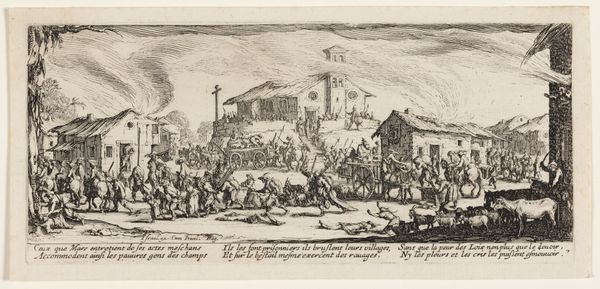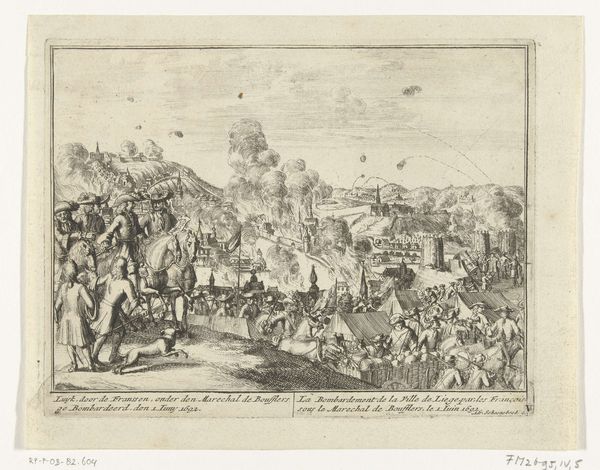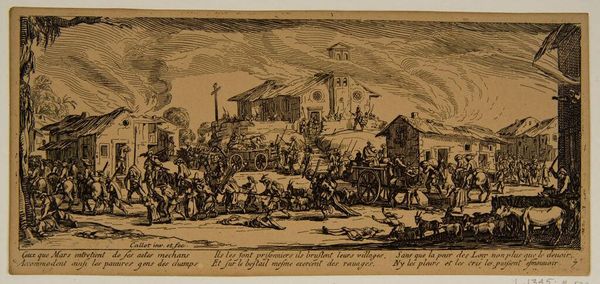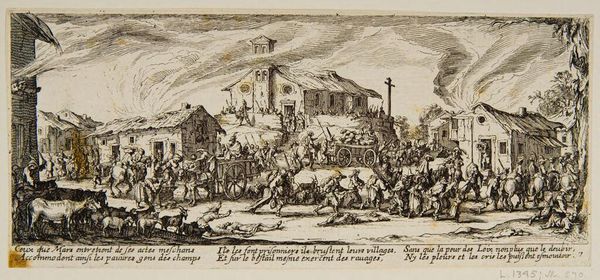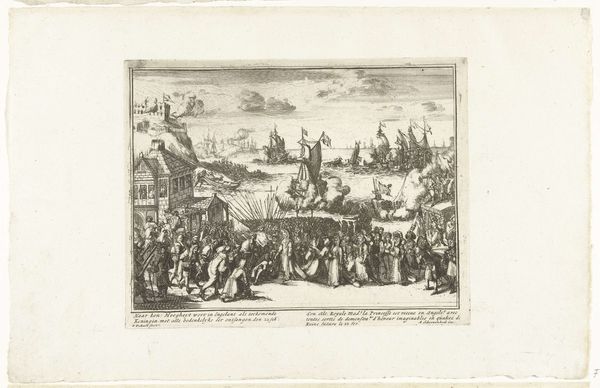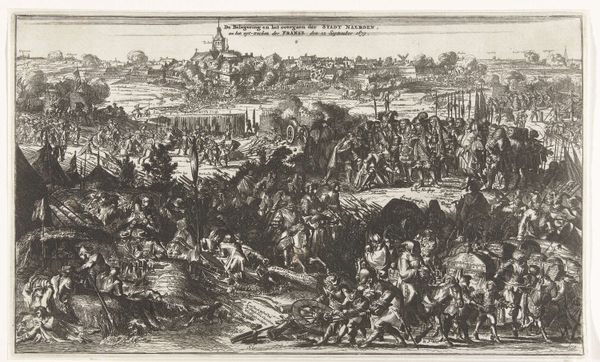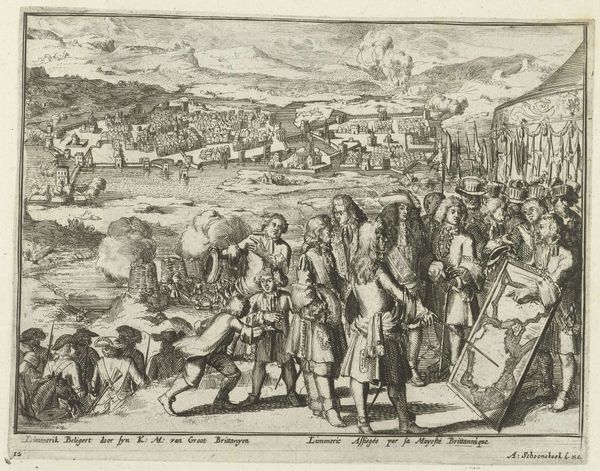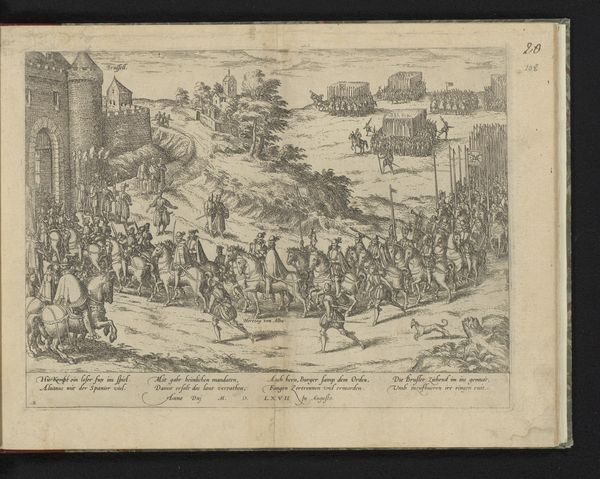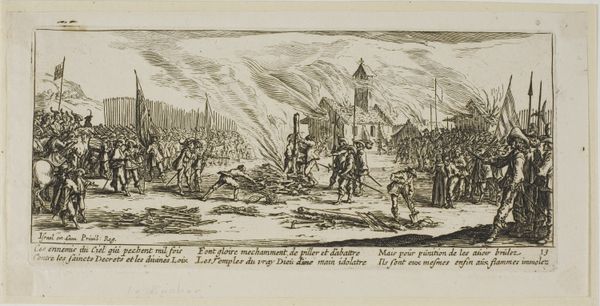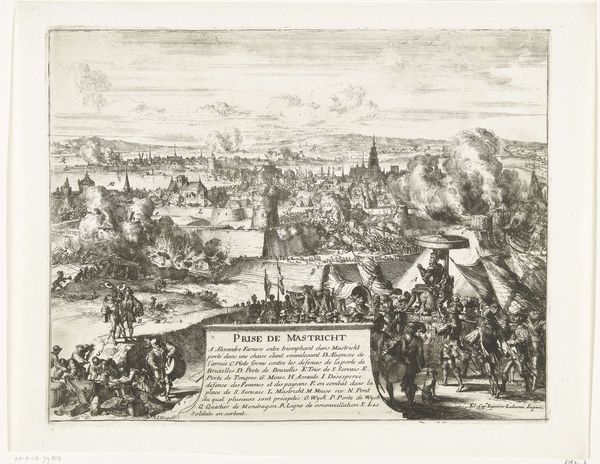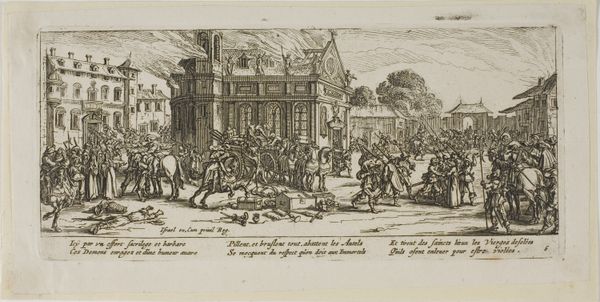
Plundering and Burning a Village, plate seven from The Large Miseries of War n.d.
0:00
0:00
drawing, print, etching, paper
#
drawing
#
baroque
# print
#
etching
#
paper
#
genre-painting
Dimensions: 74 × 181 mm (image); 84 × 183 mm (plate); 99 × 200 mm (sheet)
Copyright: Public Domain
Curator: What a harrowing scene. You're looking at "Plundering and Burning a Village," a print by Gerrit Lucasz van Schagen, part of his larger series, "The Large Miseries of War." It depicts exactly what the title suggests, complete with smoke billowing from roofs. Editor: Absolutely devastating. Even just at first glance, the overwhelming sense is chaos and destruction. It’s not just the burning buildings, but the sheer density of figures crammed into this small space. There's an inescapable tension. Curator: Van Schagen really captured the brutality of conflict here. Notice how he uses line work in the etching to differentiate textures. The figures are almost frantic, reduced to a kind of animalistic state. Editor: It’s fascinating how a medium like etching, so reliant on manual skill and repeated labor, can convey such raw violence. This wasn't quickly dashed off; it involved meticulous work. I'm interested in how the material process can stand in stark contrast to the event being depicted. What does it mean to carefully produce an image of such intense destruction? Curator: The burning village is potent as a symbol, too. Throughout history, fire has been a signifier of purification and destruction, reflecting social upheaval. This image isn’t just about the physical burning; it’s about the shattering of community and social order. The image reminds me of earlier biblical scenes of war and violence as divinely inflicted punishments on mankind. Editor: The smoke almost obscures the church, a focal point of the village architecture; I would even call that symbolic commentary. And thinking about the "Miseries of War" as a series, its availability as a print must have broadened its impact. It becomes a commodity, even – disseminated amongst potentially wide audiences as a constant reminder of war's cost. Curator: Precisely. So it raises a question: in depicting atrocity, can art serve as a warning, or does it inadvertently contribute to the desensitization it seeks to prevent? Editor: That question feels perpetually relevant when confronted with images like this, doesn't it? Looking closely, the lines defining the architecture of violence underscore both production and destruction—I now perceive not the singular moment of pain but an eternal cycle.
Comments
No comments
Be the first to comment and join the conversation on the ultimate creative platform.
